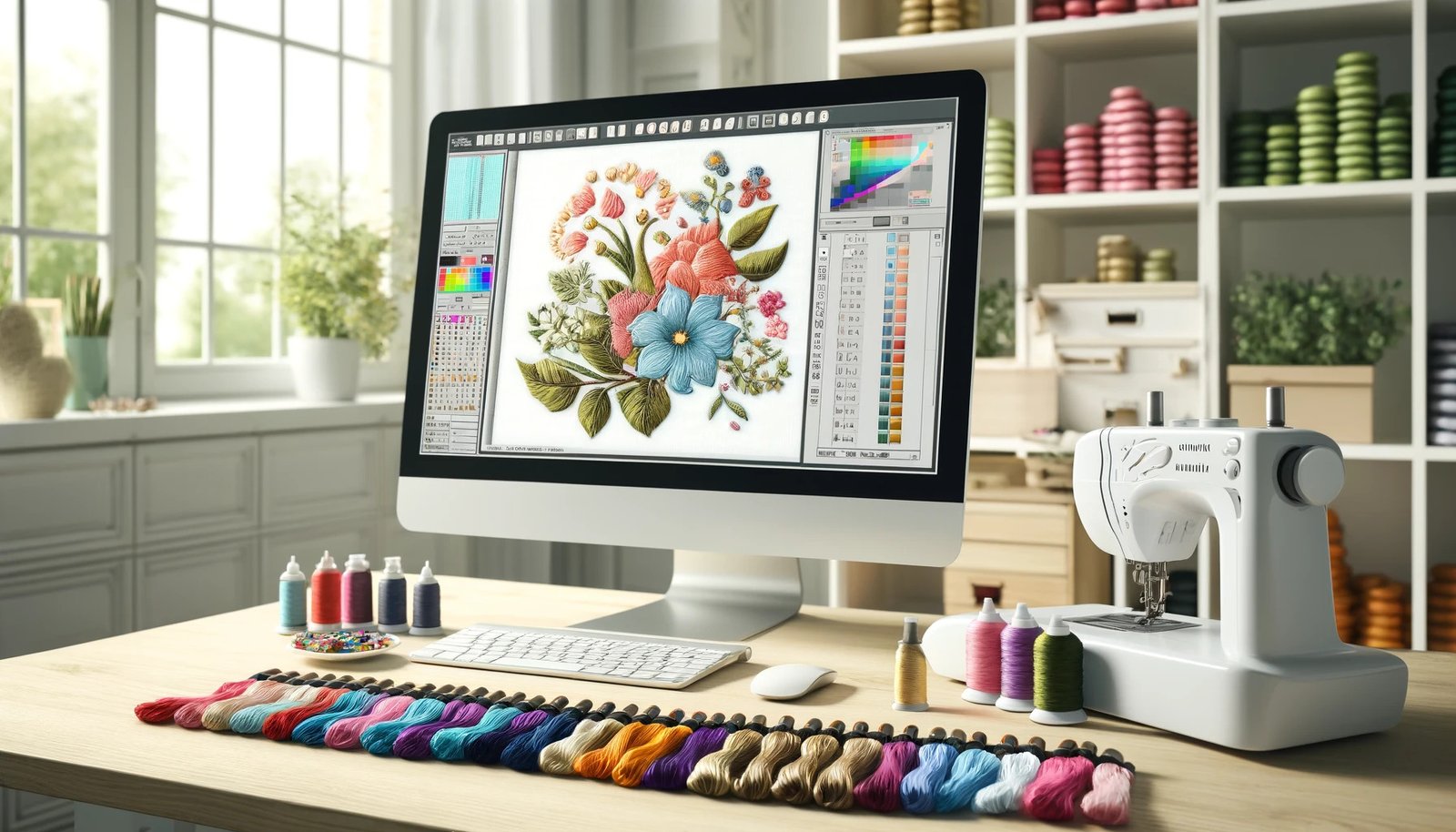Introduction to Embroidery Digitizing
Embroidery digitizing transforms creative images into stitch files read by embroidery machines. This technology bridges traditional craftsmanship with modern digital arts, enabling designers to produce intricate and repeatable patterns on textiles. For beginners, understanding this process is crucial as it forms the foundation of machine embroidery.
This craft requires not only creativity but also technical knowledge, including understanding file formats, stitch types, and fabric behavior. Digitizing allows for precise control over every aspect of the embroidery process, from stitch density to thread color choices. It makes customization in textile design more accessible and flexible.
The evolution of embroidery from hand to machine, and now to computerized methods, has significantly broadened the scope for personal and commercial embroidery projects. Aspiring digitizers should see this as an opportunity to innovate and possibly revolutionize how embroidery is perceived and executed.
Getting Started with Embroidery Digitizing
Starting with embroidery digitizing involves setting up the right tools and environment. Essential tools include digitizing software, a reliable computer, and an embroidery machine. Beginners should choose user-friendly software that offers robust support and educational resources.
The setup of your digitizing workspace can significantly affect your productivity and learning curve. An ergonomically arranged workspace with all necessary tools within easy reach promotes a smoother workflow and reduces fatigue during long digitizing sessions. Good lighting and a comfortable seating arrangement are also important to maintain focus and precision.
It's crucial to invest time in learning the software functionalities thoroughly. Many platforms offer tutorials and demo projects which are invaluable for beginners. Practicing with these tools on simple projects can build confidence and provide a deeper understanding of the digitizing process.
Basic Techniques in Embroidery Digitizing
The first step in mastering embroidery digitizing is understanding the basic stitches and their appropriate application. The running stitch, satin stitch, and fill stitch are foundational and serve different purposes, from detailing to covering large areas. Knowing how and when to use each stitch type is essential for creating effective designs.
Fabric and thread choice are just as critical as the stitch techniques. Different materials behave differently under the sewing machine, and the right combination of thread and fabric is crucial to avoid issues such as puckering or thread breaking. Beginners should start with more forgiving materials, like medium-weight cotton, which is easier to handle.
Alongside technical skills, artistic sense plays a significant role in embroidery digitizing. A good digitizer needs to visualize the end product during the design phase. This includes considering how the thread colors will interact, how the stitches will lay on the fabric, and how the design elements will come together in the final embroidery.
Advanced Digitizing Techniques
As digitizers become more comfortable with the basics, they can explore more complex techniques such as 3D puff embroidery, appliqué, or multi-layered patterns. These advanced techniques can add depth and texture to designs, making them stand out more distinctly.
Color blending and gradient techniques are advanced skills that can elevate a simple design to something spectacular. Understanding how to manipulate stitch angles and densities to create shading effects requires both artistic insight and technical proficiency in the software used.
Challenges with complex designs often involve managing thread changes and pathing efficiently to minimize jump stitches and thread trims. This level of control comes with experience and a deep understanding of both software capabilities and machine behavior.
Conclusion
Embroidery digitizing is a fascinating blend of art and technology that offers endless possibilities for creative expression. It is a valuable skill for anyone looking to enter the textile industry or simply enhance their crafting repertoire. With patience and practice, beginners can achieve proficiency and start producing their unique designs.
Embroidery digitizing not only revitalizes traditional embroidery methods but also opens up a pathway to entrepreneurship for those interested in commercializing their skills. The key to success in this field lies in continuous learning and adapting to new technologies and trends in embroidery.
Whether for personal satisfaction or professional pursuit, embroidery digitizing can be a rewarding and creative journey. It encourages a blend of creativity and technical skill that can transform simple garments into works of a


